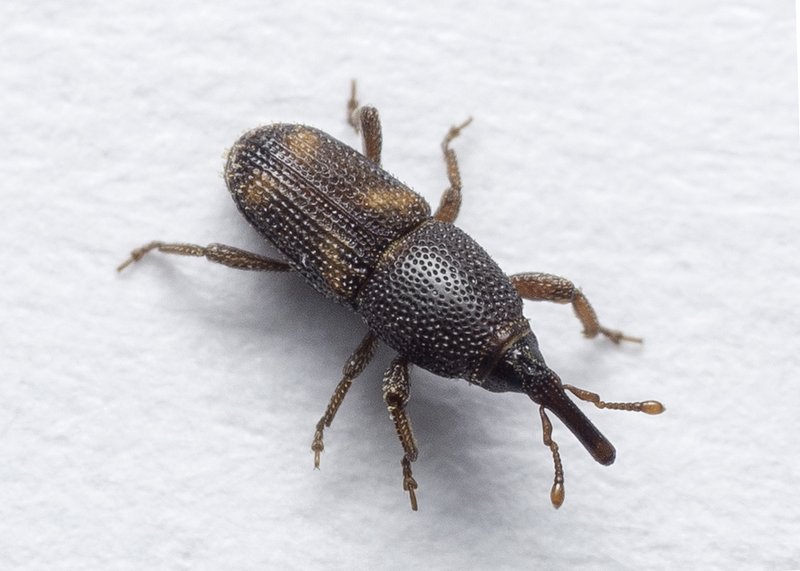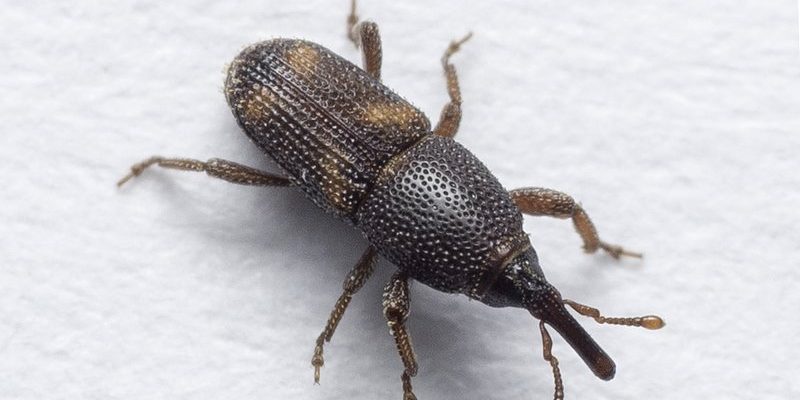
You might be surprised to learn that one of the most common pests in our food storage is the small yet mighty rice weevil. These little critters aren’t just a nuisance; they can cause significant damage to stored grains and other food products. Imagine opening a bag of rice or flour and finding tiny bugs wriggling around—that’s a rice weevil invasion! Understanding what they are, how they infest our food, and what you can do about them is incredibly important.
So, what exactly is a rice weevil? Scientifically known as Sitophilus oryzae, this weevil is a type of beetle that primarily feeds on grains, especially rice and wheat. They are just a few millimeters long, but they can multiply quickly, turning your pantry into a battleground. In this article, we’ll delve deep into the world of rice weevils, their life cycle, habits, and how you can manage or even prevent an infestation.
Identification of Rice Weevils
Let’s start with the basics: how can you identify a rice weevil? These little guys are about 2.5 to 3 millimeters long, and they have a distinct shape. Their bodies are generally dark brown or black, and they have a characteristic elongated snout—hence the name “weevil.” If you look closely, you might notice that their wing covers have tiny pits or grooves, which gives them a somewhat rugged appearance.
Adult rice weevils are often found in stored grain, but they can also be present in processed foods like flour, cereal, and even nuts. If you ever see holes in your grains or a fine powder near your food storage, it’s a sure sign of a rice weevil. Those holes are actually created by the female weevil as she burrows into grains to lay her eggs. Talk about a sneaky critter!
Life Cycle of Rice Weevils
The life cycle of a rice weevil is fascinating and can occur rapidly. Typically, a female rice weevil can lay around 300 eggs during her lifespan, which can be just a few months. These eggs are usually deposited inside grains, which provide a ready-made food source for the larvae once they hatch. After about 5 to 14 days, the eggs hatch into larvae, which begin to feed on the grain from the inside.
As the larvae feed, they grow and eventually pupate. This stage can last for several weeks, after which they emerge as adult weevils ready to continue the cycle. Depending on environmental conditions, the entire cycle—from egg to adult—can take as little as 4 weeks. This quick reproduction rate means that if you spot one or two weevils, chances are there’s a lot more lurking around!
Where Do Rice Weevils Live?
Rice weevils prefer warm, dry environments, making your pantry or grain storage a perfect home for them. They thrive in temperatures around 70 to 80 degrees Fahrenheit. When stored improperly or in damp conditions, grains can attract these pests, as moisture promotes mold growth, which weevils enjoy too.
They can easily hitch a ride into your home on new food purchases. Often, rice weevils are already present in the grains you buy, hidden within the packaging. Once they get a foothold, they can spread to other foods in your pantry quickly. So, if you suspect an infestation, it’s essential to act fast.
Common Foods Affected by Rice Weevils
Rice, of course, is the primary target, but rice weevils don’t stop there. They also enjoy a buffet of other grains and products, including:
- Wheat
- Barley
- Oats
- Cereal
- Nuts
- Pasta
- Dry pet food
Essentially, any dry food stored in your pantry could be at risk if rice weevils find their way in. That’s why it’s important to check your staples regularly.
Preventing Rice Weevil Infestations
Preventing rice weevil infestations is easier than you might think. Start by storing grains and other dry foods in airtight containers. This simple step limits access for these pesky critters. Glass jars, plastic bins with tight-fitting lids, or vacuum-sealed bags are excellent options to keep rice weevils at bay.
Additionally, keep your pantry clean and organized. Regularly check for spilled grains or open packages. It’s a good idea to rotate older stock to the front and use it first while keeping newer products in the back. If you buy in bulk, make sure to inspect the packages for any signs of infestation before adding them to your pantry.
How to Get Rid of Rice Weevils
If you discover rice weevils have invaded your home, don’t panic! There are effective ways to get rid of them. Start by disposing of any infested food immediately. It’s best to seal those items in a plastic bag before tossing them in the trash to prevent any stragglers from spreading. Afterward, thoroughly clean your pantry. Vacuum shelves, paying close attention to corners and cracks where weevils might hide.
Next, consider using natural deterrents, such as bay leaves or diatomaceous earth, in your pantry. Bay leaves have been known to repel weevils, while diatomaceous earth can help eliminate any remaining pests. Just sprinkle some in areas where you’ve spotted them and watch them vanish!
Rice Weevils and Health Concerns
One question that often arises is whether rice weevils pose any health risks. The good news is that rice weevils are generally not harmful to humans or pets. They don’t bite, and they don’t transmit diseases. However, their presence does indicate that the grains might not be at their best quality. Eating food infested with rice weevils is not ideal, though it won’t make you sick. Most people find it unappetizing to consume weevils, which is understandable!
If you find yourself in an unfortunate situation where you’ve eaten food with a rice weevil or two, don’t worry. Your body will likely digest them without any issue. However, it reinforces the importance of keeping your food storage clean and regularly checked.
Interesting Facts About Rice Weevils
| Scientific Name: | Sitophilus oryzae |
| Size: | About 2.5 to 3 mm long |
| Diet: | Primarily grains like rice and wheat |
| Life Cycle: | 4 to 8 weeks |
| Eggs Laid: | Up to 300 |
| Common Habitats: | Pans or storage areas at room temperature |
FAQ
What do rice weevils look like?
Rice weevils are small, measuring about 2.5 to 3 millimeters long. They have a dark brown or black body with a distinctive elongated snout. You might notice tiny pits on their wing covers, giving them a rugged appearance. This shape makes them relatively easy to identify among other pests.
Can rice weevils infest other foods besides rice?
Absolutely! While rice is their favorite, rice weevils also infest a variety of grains, including wheat, barley, oats, and even processed foods like cereal, pasta, and nuts. Any dry goods stored in your pantry could potentially attract these pests.
How quickly can rice weevils multiply?
Rice weevils can reproduce at alarming rates. A female can lay up to 300 eggs in her lifetime, and the entire life cycle—from egg to adult—can take as little as 4 weeks under optimal conditions. This rapid multiplication underscores the importance of early detection and management.
What should I do if I find rice weevils in my pantry?
First, remove any infested food immediately and seal it in a bag before disposing of it. Clean your pantry thoroughly by vacuuming and wiping down surfaces. Consider using natural deterrents like bay leaves or diatomaceous earth to prevent future infestations. Regular checks can help keep these pests at bay.
Are rice weevils harmful to my health?
Rice weevils are not known to pose significant health risks to humans or pets. They do not bite and are not known to transmit diseases. However, consuming infested food may not be appetizing, so it’s best to discard any infested items to maintain quality in your food supply.
How can I prevent rice weevil infestations?
Preventing rice weevil infestations is all about proper storage. Use airtight containers for all grains and dry foods to restrict access. Keep your pantry clean and organized, regularly checking for any signs of pests. Rotate your stock, using older items first and keeping newer purchases in the back.
Can rice weevils survive in the freezer?
Yes, freezing grains can effectively kill rice weevil eggs and larvae. If you’re concerned about an infestation, consider placing any suspect grains in the freezer for at least a week. This step can help eliminate the problem before it starts.
Do rice weevils prefer certain environments?
Rice weevils thrive in warm, dry environments, making your pantry the perfect home. They prefer temperatures around 70 to 80 degrees Fahrenheit. High humidity can attract weevils as it encourages mold growth, which they may feed on.
What natural methods can I use to deter rice weevils?
Some natural deterrents include using bay leaves, which are thought to repel weevils, or sprinkling diatomaceous earth in your pantry. Both methods can help create an environment that’s less hospitable to these pests.
Can rice weevils come back even after I’ve cleaned my pantry?
Yes, rice weevils can re-enter your pantry if new infested food is brought in. This is why ongoing vigilance is essential. Always check for signs of infestation when purchasing grains and keep your storage areas clean and well-organized.
Are there any chemical treatments for rice weevils?
While there are chemical solutions available to manage rice weevils, they are often not necessary for most households. Simple preventive measures, such as proper storage and natural deterrents, usually suffice. If infestations persist, consider consulting with a pest control professional for advice tailored to your specific situation.

